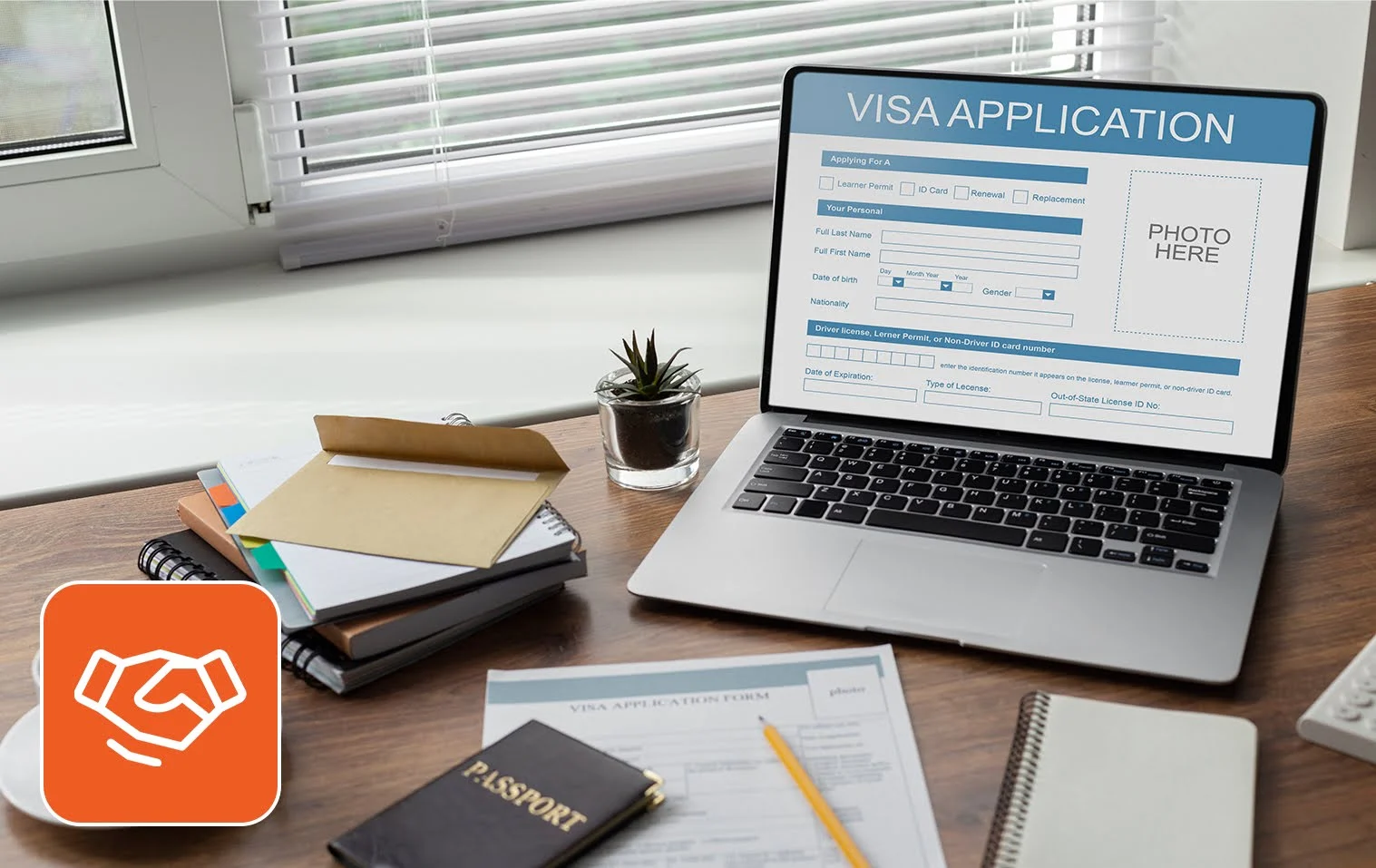Raise your hand if you’ve ever ended a day of back-to-back virtual meetings feeling more drained than after a cross-country business trip.
Five years ago, virtual meetings became our lifeline. We traded commutes for coffee breaks at home and boardrooms for Zoom rooms. At first, it felt liberating. No traffic, no flights, no rushing across town. But as the months turned into years, a new reality set in: virtual fatigue, characterized by mental exhaustion, eye strain, and even anxiety.
Let’s be clear: We love virtual meetings. They’ve saved us from soul-crushing commutes, connected global teams in real-time, and quietly reduced carbon emissions. For working parents, caregivers, and those managing disabilities or chronic conditions, they’ve leveled the playing field: no more choosing between career and life. The flexibility to crush deadlines from your couch? That’s not just convenient, it’s revolutionary.
In this blog, we share six fatigue-reducing Zoom meeting tips to help you crush virtual fatigue along with those deadlines. But first, let’s understand why you feel Zoom fatigue in the first place. (Keep in mind that the virtual meeting tips we discuss here hold true whether you’re using Google Meet, Teams, or any other video-conferencing platform.)
Understanding Why Screens Drain Us
Virtual meetings demand far more from our brains than we realize. In IRL interactions, body language, shared physical space, and natural pauses create rhythm. On the other hand, virtual meetings force us to process fragmented cues in the form of pixelated faces and delayed audio.
According to research, this “Zoom fatigue” or “remote work burnout” stems from cognitive overload: our brains work overtime to fill in missing social signals while suppressing the instinct to interpret on-screen faces as threats (a primal response to prolonged eye contact).
Compounding this is the performance pressure of being on camera: studies show that seeing our own reflection in real-time triggers self-evaluation stress, diverting focus from the conversation. I know that when I see myself, I tend to sit rigidly to stay “frame-ready”, and after a while, I feel fatigued and stress on my back. In addition, the general lack of environmental variety dulls our sensory engagement.
So what can we do about it?
6 Fatigue Reduction Tips for Zoom Meetings
1. Reconnect with movement
Steve Jobs famously held “walking meetings,” and science backs his approach. Walking boosts creativity, reduces stress, and combats screen fatigue. If your meeting doesn’t require screens, grab your phone and step outside. Even pacing your living room counts.
This Zoom meeting tip does more than reduce fatigue; it might just keep you (and your heart!) in shape.
Try this: Propose a “walking call” to your team if you’re in a position to do so. Use the first minute to set the tone: “I’m stepping outside for fresh air. Let’s dive in!” or “I’m going to walk while I talk. Let’s begin!”
2. Camera: it’s okay to opt out
A lot of virtual meeting tips extol the benefits of keeping your camera on. A quick Google search will tell you that it’s the key to productivity and engagement. That’s probably why many leaders insist that cameras stay on, but the unintended consequences tell a different story. Constant visibility can heighten anxiety and split focus. Studies reveal that “video on” fatigue reduces engagement.
Politely advocate for flexibility: “I’ll keep my camera off today to focus better, but I’m fully present!” Normalize this for your team. Trust is built through contribution, not pixels.
Try this: For non-critical meetings, default to audio-only. Save video for collaborative sessions.
3. Plan buffer zones
Back-to-back meetings are productivity killers. Even 5–10 minute breaks reset focus. Block “buffer zones” in your calendar to stretch, hydrate, or breathe.
Try this:
- This one’s a highly over-quoted but extremely underutilized Zoom meeting tip: Set meetings to end 5 minutes early (25/55-minute slots).
- You can also use tools like Outlook’s “Focus Time” to designate breaks. (But be sure to actually take them!)
4. Reconnect with your environment
Staring at screens for hours can leave you feeling oddly detached, like you’re floating through your day instead of fully inhabiting it. This sense of dissociation, which simply means your mind and body aren’t quite in sync, drains energy and focus over time.
To counter this, rearrange your workspace so that it anchors you.
- Start with lighting: use bright, cool-toned lights during work hours to simulate daylight (a smart bulb or adjustable lamp works wonders), then switch to warm, dim lighting after hours to signal “time to unwind.” We just tried this ourselves! At our SPECTRAFORCE Minneapolis office, we switched to lamps to create a softer environment. The bright overhead lights were exhausting, so we found a solution that made us all more comfortable and productive. Small change, big impact.
- Add tactile elements — a textured desk mat, a plant you can touch, or even a stress ball — to engage your senses and pull you back into the present.
Try this now: After each meeting, take 30 seconds to “reset.” Turn away from your screen, take three deep breaths, and consciously notice three things in your physical environment (e.g., the texture of your desk, the sound of a fan, or the view outside your window.)
PS: You can use this fatigue-reducing Zoom meeting tip to ground yourself anytime you’re stressed!
This tiny ritual bridges the gap between virtual and real, helping you reclaim focus.
- If you’re in an office and feel self-conscious about this practice, simply step away from your desk. Grab water, walk to the restroom, or pause by a window.
- For those of you working remotely (lucky you!), this ritual is especially vital because your home is both workspace and sanctuary. Grounding yourself bridges the gap between “virtual you” and “real you” and reduces remote work burnout.
5. Replace (some) meetings with asynchronous solutions
There are memes about this Zoom meeting tip, and not without reason. Before scheduling a call, ask: Could this be resolved offline?
To reduce status update meetings, try tools like ClickUp, Asana, and Trello for task tracking. Reserve meetings for debates and decisions that truly require live dialogue.
Try this: Audit your calendar. Replace one recurring meeting this week (for just you, or you and your team) with a new SOP that replicates the communication on a Slack channel or project management tool.
6. Consider blue light-blocking glasses
One of the most overlooked, but valuable Zoom meeting tips is to use blue light blocking glasses. These block out high-energy light that disrupts sleep cycles and strains your eyes.
While research is mixed, many users report fewer headaches and less dryness after using blue light blocking glasses. You can also try apps like f.lux or Night Shift to reduce screen blue light automatically after sunset.
Try this:
- Test a pair of blue light blocking glasses for a week (many brands offer affordable options like Gamma Ray or Felix Gray).
- Pair them with the 20-20-20 rule: Every 20 minutes, look at something 20 feet away for 20 seconds.
Security is part of self-care
Have you thought about your cybersecurity while using Zoom and other virtual platforms? Follow these tips:
For everyone:
- Require meeting passwords (prevents randos from joining).
- Enable waiting rooms (you control who enters).
- Generate unique meeting IDs (no recycling links!).
For large/public meetings:
- Lock meetings after they start.
- Restrict screen sharing/chat to hosts.
- Mute participants on entry.
Prefer a visual guide? Watch this 10-minute video for step-by-step Zoom meeting safety tips.
Cut Screening Time to Cut Screen Time
Let’s face it: Not all meetings are created equal. While this blog has cited virtual meeting tips to optimize your virtual stamina, some meetings, like endless candidate screenings, can be minimized drastically.
At SPECTRAFORCE, our proprietary AI tool, Arya, streamlines recruitment, filtering thousands of profiles so that we deliver only the top-tier candidates to you. Fewer interviews, fewer hours on Zoom, more time for the work that matters. Because what’s the best way to reduce meeting fatigue? Have fewer meetings.
Curious how we cut screening time by 40% for clients? Explore our staffing solutions or talk to our team about smarter hiring.
FAQs
What are the signs of Zoom fatigue?
Eye strain, headaches, mental fog, irritability, or feeling “checked out” after meetings. Physically, you might notice neck stiffness or shallow breathing from sitting too rigidly.
How can I reduce eye strain during virtual meetings?
Dim your screen brightness, increase text size, use blue light blocking glasses, and follow the 20-20-20 rule. Bonus: Position your camera at eye level to avoid neck strain.
Is Zoom fatigue a real thing?
Absolutely. Stanford researchers identified four key causes: excessive eye contact, reduced mobility, constant self-view, and cognitive overload. Your exhaustion is valid. And also fixable!
How do I look confident on Zoom?
Confidence starts with what you know, not how you look. Prep your talking points in advance, rehearse key messages, and focus on the content. Stick it near your screen.
It’s easier said than done, but try to ignore your camera feed.



